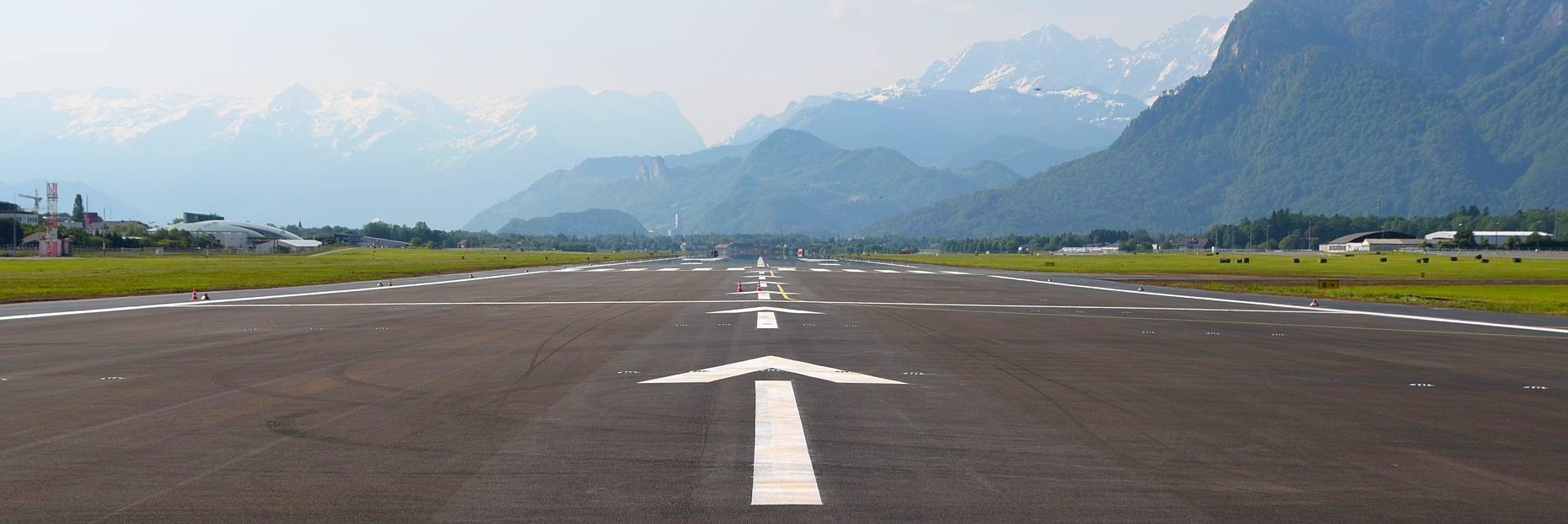The Best Airport Runway Designs, for a Safe Takeoff and Landing
You might have heard that takeoff and landing are one of the most critical parts of the flight. You have heard well. According to Boeing's statistics for 2011-2020, the final approach and landing accounts for 54 % of all fatal accidents, and takeoff and the initial climb for 13 %.
Pilot training and proper maintenance of the landing gear are essential to reduce such accident rate. But there is another parameter in place: the quality of the runways. In this article we show you the features that make them safer.
Concrete vs. asphalt
First, let’s understand the differences between these two materials. Concrete contains about 70 % aggregates (rocks of a wide range of sizes) bind together with cement and water. Asphalt runways are also made of aggregates, but the binding agent is asphalt, a highly viscous and black looking petroleum derivative.
Runways are mainly built with Portland Concrete Cement (PCC) or Hot-Mix Asphalt (HMA). Both materials have pros and cos. Concrete is harder, more expensive, lasts longer, but also and prone to cracking. Asphalt is cheaper, more flexible but has a shorter lifespan. Most airport runways are made of asphalt.
For a safe takeoff and landing, the surface of the runway has to provide high friction. This ensures that the wheels stick to the ground when the pilot presses the breaks. Sliding of the wheels is a very dangerous situation where the pilot might loose control.
At the high speeds of the plane, the amount of friction is mainly determined by the large "bumps" over the runway surface: the macroroughness. Newly laid asphalt has a macroroughness of 0.5 to 0.8 mm height. Similar values can be achieved in concrete with an adequate selection of the sizes of the aggregates. Therefore, the end result is usually very similar for both materials: good friction, which is closely monitored as the runway ages. So no clear winner here!
Water
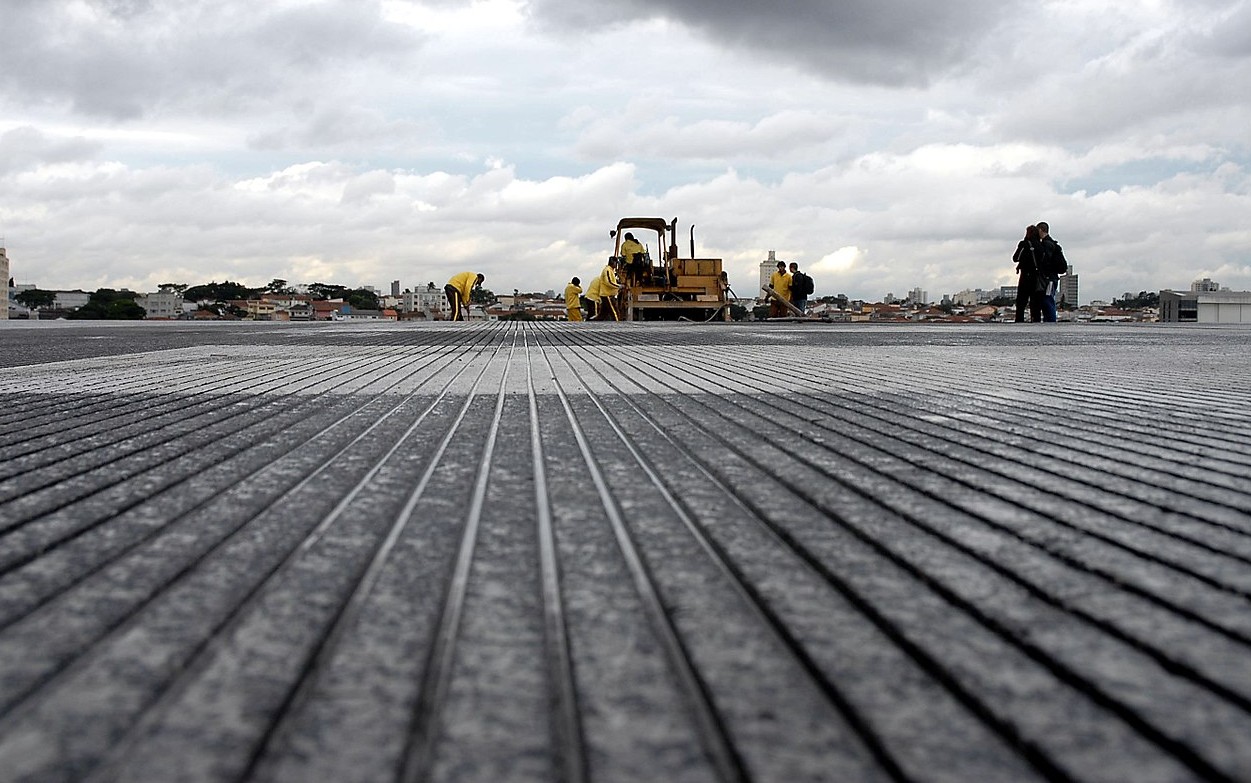
On a wet runway, the wheels of the plane splash out the water in front of them. At high speeds, the pressure done by the wheels on the water is so high that the plane can actually roll on top of it, loosing contact with the ground. This known as hydroplaning.
To minimize the risk of hydroplanning, runways are built with a transverse slope, meaning that the center line of the runway is elevated over the sides, providing a natural drain path for the water.
But the tilt alone cannot remove all water, a thin layer will inevitably be left flowing, specially during continuous strong rain. To remedy this, runways are grooved with lines of 6 mm deep and 6 mm wide. These grooves are parallel to the direction of the plane, so that they can accommodate all the pressed water below the wheel as the plane advances.
if you don't see grooves in your runway, don't worry. An alternative to grooving is to lay a thin layer of porous concrete at the top to drain the water and allow it to flow through the bottom towards the sides. This layer contains about 15-20% voids.
Ice
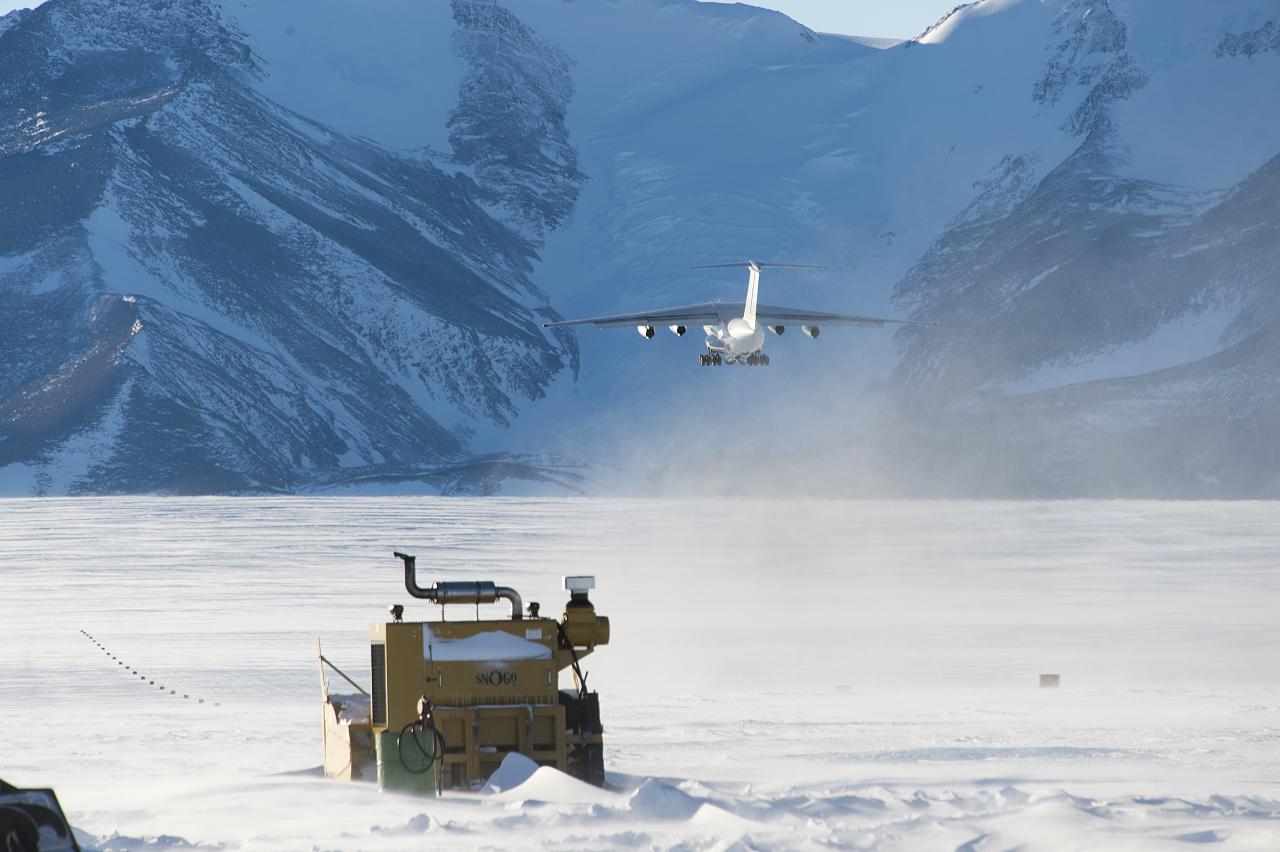
Any car owner knows that driving on an icy road is simply not an option. So how can planes land when there is icy weather? The short answer is that runways are maintained ice free.
During icy conditions, runways can be sprayed with anti-icing products such as water - glycol mixtures. These are very effective, but have the downside of negative environmental impact. Less hazardous mixtures containing alkali or metal products have been observed to cause corrosion of the carbon breaks. Therefore, mechanical methods such as plows, sweepers and blowers are also used to keep the runway snow and ice free.
But there are some runways which are always icy: the ones in Antarctica's research stations. Despite the adverse weather, these runways are also maintained snow free, and deep grooves are cut onto the ice to improve the grip. But this is not enough to prevent sliding when the wheels breaks, so pilots use a different technique known as reverse thrust. This opens two hatches on the sides of the engines which flip the direction of the jet exhaust forward, producing a force opposite to the plane motion.
Most planes have reverse thrust capabilities, but the FAA requires all planes to be able to land in concrete or asphalt surfaces without using them. They may only be used in adverse weather conditions.
Wind
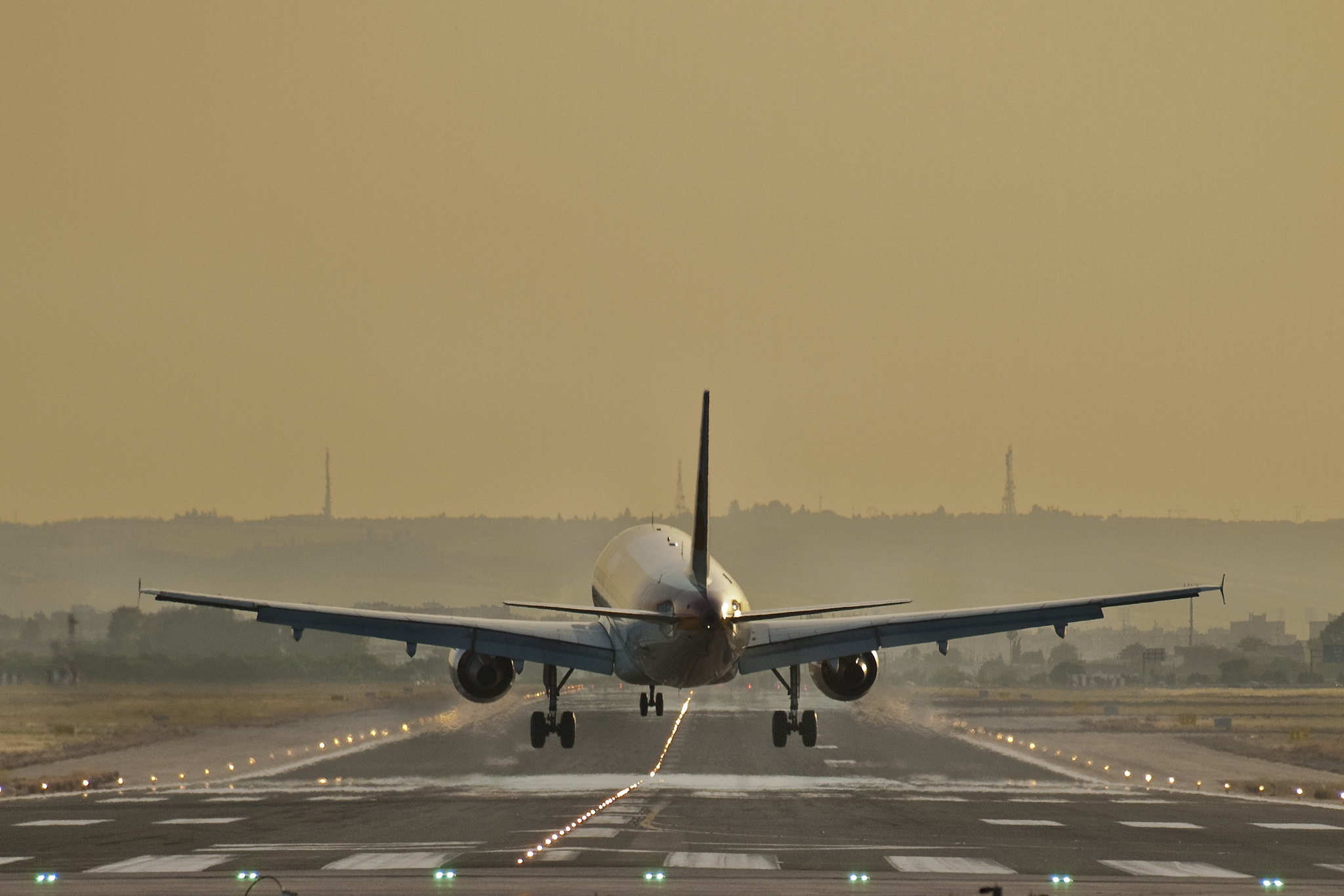
During landing or takeoff, crosswinds are the most critical since they create an uneven force distribution on the plane’s wings. As a general rule, with crosswinds of 20 kts (37 km/h) or more, planes are not allowed to land.
Planning the orientation of a runway is therefore a very important step. The FAA recommends measuring the wind direction over 10 years and orienting the runway to be below the 20 kts limit for at least 95 % of the time.
The initial airports built during the 50s or 60s did not have much weather data to determine the orientation the runway. The solution was to build 3 runways forming a triangle, to ensure that for any wind direction landing would always be possible in one of them. The improvement on weather monitoring has led to most airports knowing the usual crosswinds directions and aligning many of their runways in parallel.
Current airports can adhere to the 95 % recommendation from the FAA in different manners. Airports mainly operate during daylight, so if nights are very windy, the runway orientation might still hold. Seasonal variations with storms and high winds should also be considered, but not as much if they occur in a low-traffic period. And finally, small islands or airports in mountains are just constrained by the terrain, and even if the crosswind is high, the runway might need to be built anyways. In this case the runways are made wider, longer and with extra safety features to ensure a proper landing.
It's good keep in mind that, even if the regulations set a maximum crosswind of 20 kts, many planes have shown landing capabilities at much higher speeds. For example, the Airbus giant, the A380, took off and landed several times during runway tests in Iceland, with crosswinds as high as 40 kts!
Fog (and nights)
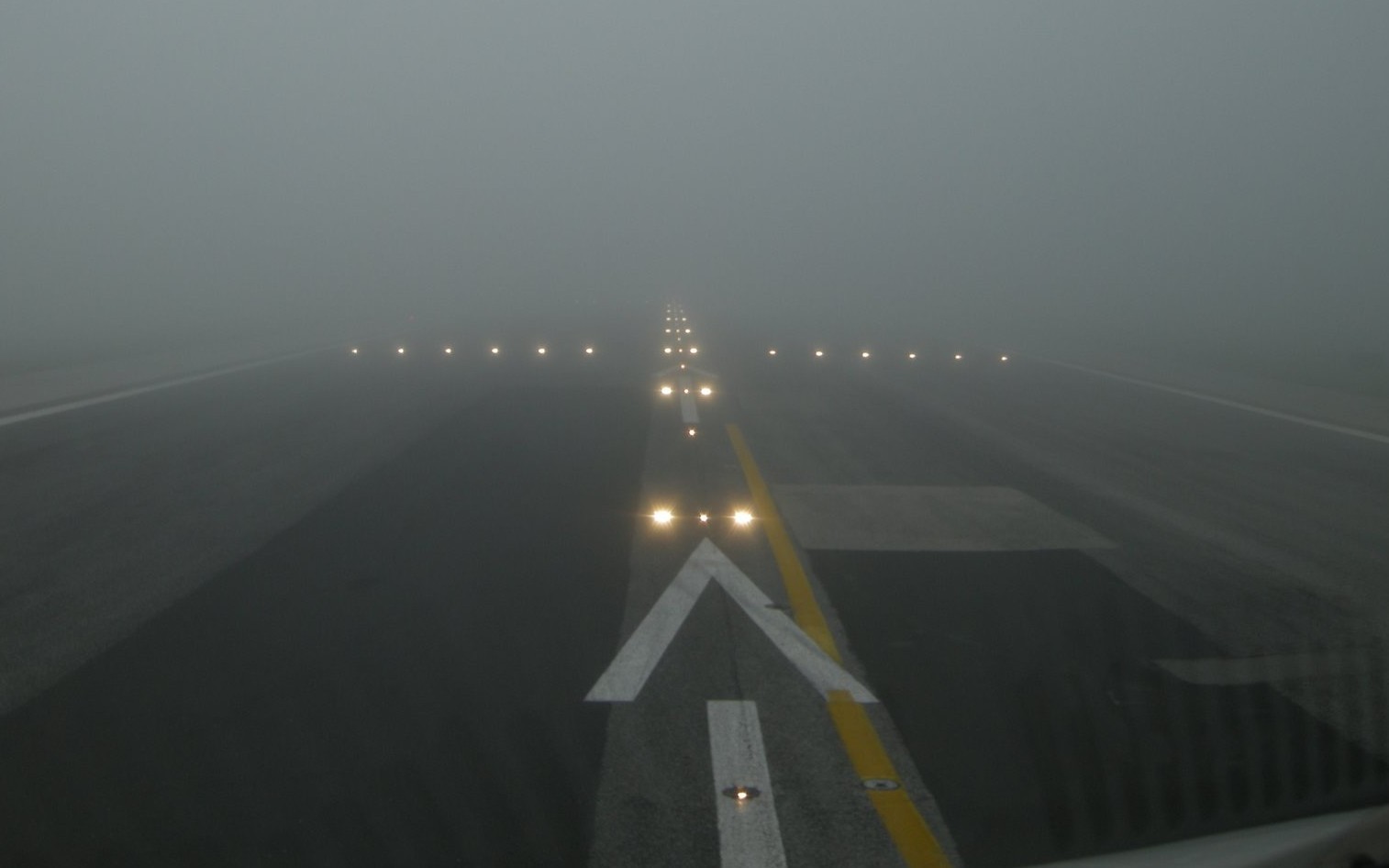
The accident rate during takeoff and landing is 3 times larger at night than during the day. A similar issue occurs during foggy or low visibility days.
Pilots need to see the runway to orient the plane for landing. To put an example on how important this is, the FAA disallowed the first Concorde models from landing in the US because their high landing angles prevented pilots from getting a full view of the ground. The Concorde engineers had to come up with a solution where the nose of the plane could rotated down up to 12.5 degrees during landing to enable the view.
Nowadays pilots can land at night and in low visibility thanks to the Instrument Landing System (ILS). The ILS consists of location sensors and radio wave emitters which send instructions to the plane on how much to move in the vertical and horizontal directions during the approach. This enables an automated approach, with very little pilot action.
There are many types of ILS systems. The most advanced, Category 3B, allows pilots to land in extreme conditions where the visual range to the runway is just 160 ft (50 m). Category I and II require higher visual ranges of 1100 ft (350 m) and 1800 ft (550 m), respectively. Not all airports have these systems, they are quite expensive and only installed where required. Only a few hundred airports in the world have it.
The lightning of the runway is another important feature. The requirements are two lines of lights on the sides, spaced a maximum of 200 ft (60 m); a center line with spacing of 50 ft (15 m); a band of green lights on the approach area; and a band of red lights on the end of the runway. The center lights are embed in the ground, and are design to withstand, not only the weight of the plane, but the much larger force done during the first touchdown.
The best runways
So which is the best runway? Well, given that the design requirements are very similar for all, we can say that all properly maintained runways should provide the same level of safety.
Most of the big airports have several runways to accommodate the high traffic and to choose a different orientations if crosswinds are high in one. Chicago O’Hare has the world record with a total of 8 runways. The last, Runway 9C/27C, was built in 2020. Weather is rough in Chicago, so ILS Category 3B systems are in place, as well as advanced ice removal equipment.
Dallas, Denver, San Francisco, London Heathrow, Madrid, Amsterdam Schiphol… All of these also have ILS Category III and well maintained runways.
It might be easier to pick the worst runway instead. We will go for Gibraltar’s International Airport runway: only one, short, with high crosswinds, no ILS system, starting and finishing in the sea, and crossing the main street of the city (Winston Churchill Avenue).
References
Federal Aviation Administration (FAA), 2019. Runway design. AC 150/5300-13A, Chapter 3.
Boeing, 2021. Statistical summary of commercial jet airplane accidents. Worldwide Operations | 1959 - 2020.
ICAO. Runway Surface Condition Assessment, Measurement and Reporting. Cir 329, AN/191.
Boeing, 2014. Effects of Alkali Metal Runway Deicers on Carbon Brakes . Aeromagazime, QTR_01, 14.
Skybrary. Runway De-icing .


